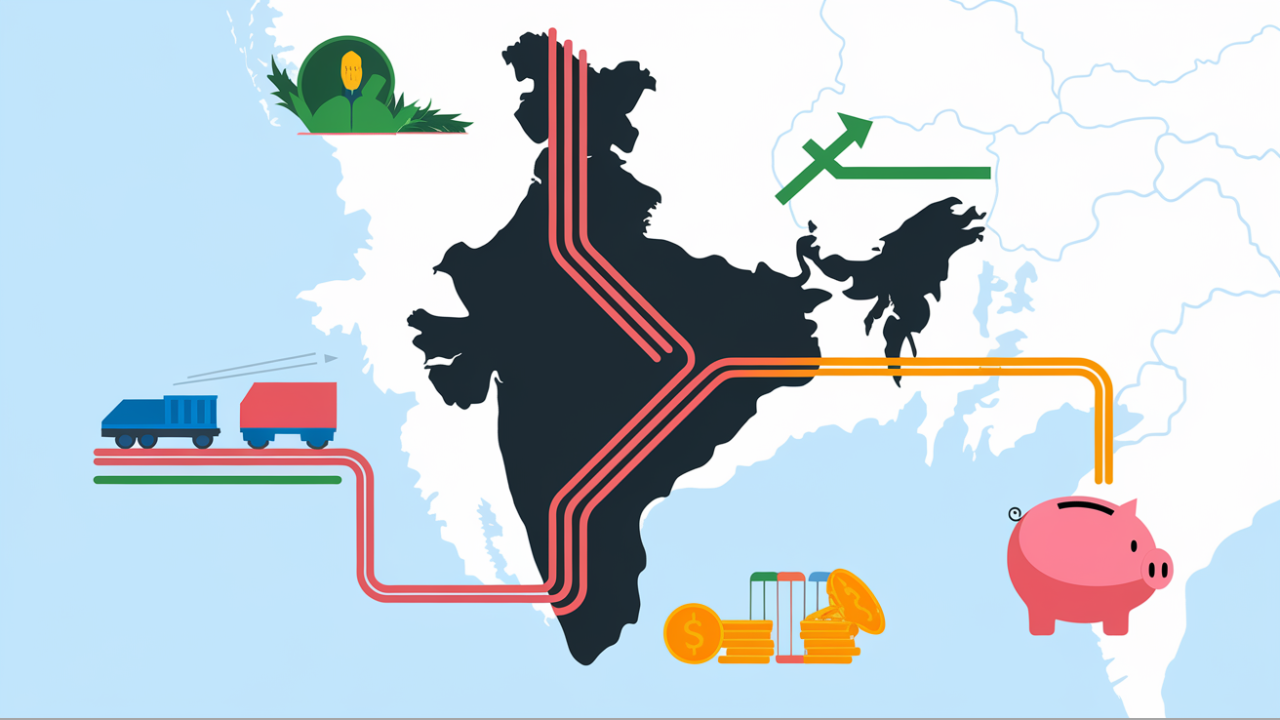Measuring Domestic Migration with High-Frequency Data: Insights for Growth and Development
Domestic migration plays a pivotal role in shaping economies and societies. It reflects the socio-economic dynamics of a region and influences developmental trajectories. In the post-pandemic era, India has witnessed a significant slowdown in migration, which raises concerns about its impact on growth.
Understanding Domestic Migration Trends
Migration intensities vary across the globe. Developed countries generally exhibit higher domestic migration intensities compared to developing nations. Among developing regions, Latin America and Africa lead in migration rates, while Asia records the lowest intensities. Within Asia, South Korea tops the chart, while India records the lowest migration intensity.
Longitudinal studies provide further insights. Data from the early 2000s shows a stagnation or decline in migration rates in Africa and Latin America. In contrast, countries like China, Indonesia, and Vietnam have experienced significant increases in migration. India and Egypt have some of the lowest migration intensities at 5%, while South Korea’s rate stands at 50%, the highest globally.
The Indian Context
India’s primary source of migration data comes from the decennial census, with the last figures available from 2011. These stock figures fail to capture seasonal variations and nuances of migration. To bridge this gap, the Economic Advisory Council to the Prime Minister’s working paper, 400 Million Dreams!, leverages high-frequency granular data to provide a comprehensive understanding of domestic migration trends.
Key Findings from the Study
Decline in Migration Rates:
- Migrants decreased from 45.57 crore in 2011 to 40.20 crore in 2023.
- Migration rates dropped from 36.64% to 28.88% of the population.
- Improved rural amenities, better connectivity, and increased economic activities in rural areas are primary reasons for this decline.
Regional Concentration of Migration:
- Five states dominate both migrant origins and destinations, accounting for nearly half of all migrations:
- Origin States: Uttar Pradesh, Maharashtra, Andhra Pradesh, Bihar, and West Bengal.
- Destination States: Maharashtra, Uttar Pradesh, Andhra Pradesh, West Bengal, and Tamil Nadu.
- Bihar emerges as a major source, contributing to four of the top 10 migratory routes, such as Bihar–Delhi and Bihar–Maharashtra.
Mobile Subscriber Data Insights:
- Roaming mobile connections provide real-time insights into migration patterns.
- Delhi saw a significant reduction in migrant numbers during peak pandemic months (May 2020 and May 2021).
- Seasonal migration trends reveal high inflows during December–January and August–September and outflows during May–June and October–November.
Economic Impact via Banking Data:
- Savings–current account balance ratios indicate the economic influence of migration.
- Higher ratios in districts like Chittoor (Andhra Pradesh) and Darbhanga (Bihar) highlight significant remittances.
- Metropolitan cities exhibit lower ratios due to higher economic activities.
Implications for Policy and Growth
Understanding migration trends is critical for policymakers to address regional disparities and harness the potential of migrant workers. The findings highlight the need for:
- Improved Data Collection: Leveraging high-frequency data sources such as mobile networks and banking records can provide real-time insights.
- Infrastructure Development: Enhancing rural connectivity and amenities can reduce forced migration.
- Economic Opportunities in Source Regions: Promoting local industries can create employment and reduce migratory pressures.
- Support for Migrants in Urban Areas: Ensuring adequate housing, healthcare, and social security for migrants is essential for sustainable urban growth.
Conclusion
Domestic migration is a complex and dynamic phenomenon that significantly impacts India’s socio-economic landscape. The innovative use of high-frequency data in the 400 Million Dreams! study offers a new perspective on migration patterns, enabling timely policy interventions. By addressing the challenges and opportunities presented by migration, India can chart a path toward inclusive growth and development.
For more insights on migration trends and other topics relevant to competitive exams, visit our blog section at Atharva Examwise.
By : team atharvaexamwise







